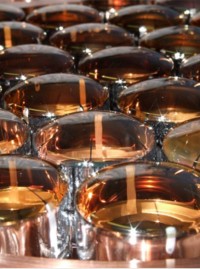Exploring the Dark Universe

Dr Alex Murphy, a Reader in the School's Nuclear Physics group, will be delivering a lecture on Dark Matter and Dark Energy as part of the University of Bath's Millennium Lectures series. The series forms part of the programme of the International Year of Chemistry.
- Venue Bath University
- Date February 9th 2011
- Summary 'The materials of the everyday world around us are composed of the chemical elements, in turn formed from atoms and their substructures. Yet when we examine the motions of stars and galaxies we are led to the remarkable conclusion that the energy content of the Universe as a whole is completely dominated by fundamentally different materials, dubbed "dark matter" and "dark energy". What is the evidence for this remarkable statement? What are these new entities? And can we prove they really do exist? Find out how an experiment deep in a potash mine near Whitby might be about to provide some of the answers.'
You can read more about the work in the Boulby potash mine in this article in the Mail On Sunday.

